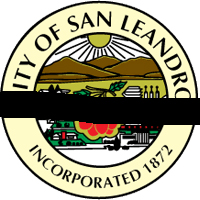 San Leandro has a long history of representation at the state level. Presently, Ellen Corbett, a former mayor of San Leandro, is the Majority Leader of the California Senate while Bill Lockyer, a former San Leandro School Board member, is the State Treasurer. Even Pete Stark, our representative in Congress, started his political career in San Leandro. San Leandro’s influence at the state level may cease, however, as no San Leandran has so far announced a 2012 run for either the California Assembly or Senate. While the election is not until June, and candidates don’t need to file until next March, anyone seriously considering a run needs to start fundraising and coalescing political and grass-root support right now. So far, there seem to be only four candidates for the Assembly district that will include San Leandro, and two candidates for that Senate district.
San Leandro has a long history of representation at the state level. Presently, Ellen Corbett, a former mayor of San Leandro, is the Majority Leader of the California Senate while Bill Lockyer, a former San Leandro School Board member, is the State Treasurer. Even Pete Stark, our representative in Congress, started his political career in San Leandro. San Leandro’s influence at the state level may cease, however, as no San Leandran has so far announced a 2012 run for either the California Assembly or Senate. While the election is not until June, and candidates don’t need to file until next March, anyone seriously considering a run needs to start fundraising and coalescing political and grass-root support right now. So far, there seem to be only four candidates for the Assembly district that will include San Leandro, and two candidates for that Senate district.
Redistricting is almost finalized at the state level, and most of San Leandro has been grouped with Alameda and most of Oakland in a new Assembly district. The new Senate district goes from San Leandro as far north as Rodeo, while the congressional district ends in north Berkeley. Previously, we were part of an Assembly district that included Hayward and Pleasanton, and a Senate district that goes from San Leandro as far south as north San Jose. This all means that San Leandro will encounter a new batch of politicians aiming to represent it. Currently, three of the declared candidates for Assembly are from Oakland and one is from Alameda. While the Senate race will be very competitive, posing former Berkeley mayor and current state senator Loni Hancock against Oakland Assembly member Sandré Swanson, the field of candidates for the Assembly seems rather weak, and there is still room for a San Leandran to jump into the race. While I haven’t heard any rumors of anyone considering this move, there are several past or current elected officials who could be strong candidates if they decided to run.
The current candidates for the Aseembly are:
Rob Bonta, a Filipino lawyer, works as a deputy DA in San Francisco. After holding a couple of commission seats, he was elected to the Alameda City Council in November 2010. His feet are not yet wet, but he’s ready to jump ship into bigger things. His website doesn’t offer a platform or indications as to what his views are, but he is a democrat and said in an interview he’s interested in education and social services. He is married, with 3 children.
Abel Guillen: Guillén is a young man who runs a school finance firm. He was elected to the Peralta Community College Board of Trustees in 2006, and re-elected in 2010. He’s running in a general “make California better” platform. He is a democrat and seems to be single.
Kathy Neal: Neal is an African American businesswoman and Democratic Party operative. She’s currently a member of the Alameda County Democratic Central Committee. She is divorced from former Oakland mayor Elihu Harris. She doesn’t seem to have a webpage, so I don’t know what her platform will be.
Joel Young: Young is a young African American lawyer, appointed to the AC Transit Board in 2009 and re-elected in 2010. His past political experience consists of working on Loni Hancock and Joan Buchanan’s campaigns. He is running on a platform of “jobs, education and the environment”. He is a democrat. He is single with no children.
I hope to meet with all the candidates and report back on my opinion of them and their platforms. I also hope to see someone with more experience and specific goals arise, ideally from San Leandro.



